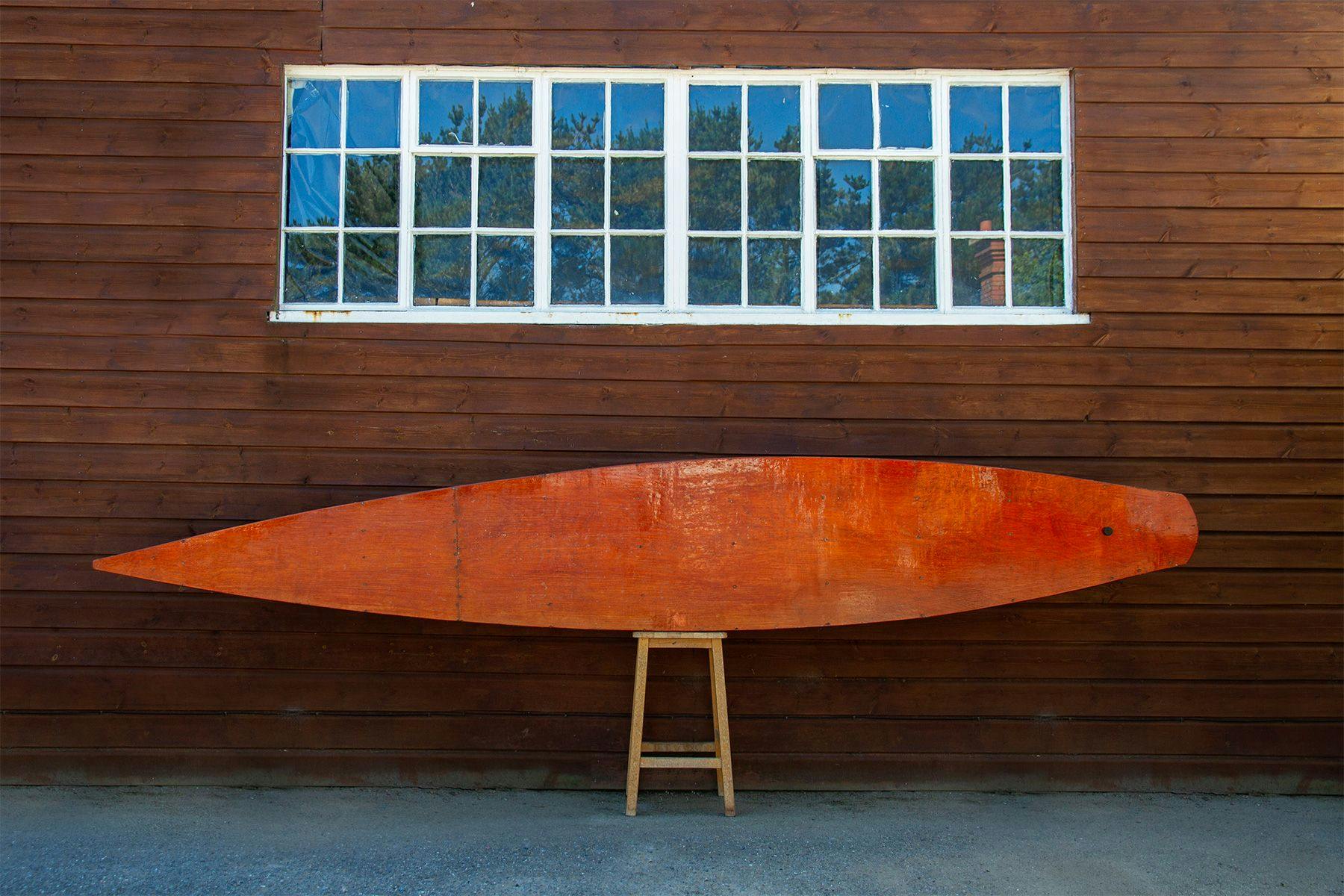SurfboardsThe History of Surfboard Design: Tom Blake’s “Cigar Box”

The 1930s is a period in surfing underpinned by the modernization of equipment. It was a decade when creations and experiments kick-started developments in design and gave a more progressive touch to the production of boards – which would evolve hand-in-hand with technology and demand. During this decade, the name Tom Blake is stamped all over the world of surfboard design thanks primarily to his creation and development of the first hollow surfboard (later nicknamed “cigar boxes”) in 1929.
The Historical Context
Since the beginning of the century, the blueprint for a surfboard hadn’t changed much: it was solid timber and blunt-nosed, with a flat deck, a slightly convex rolled-bottom, and rounded rails that narrowed into a square back end. These evolved naturally from ancient olo and alaia models, and the fact that boards had no fins impeded surfers from turning abruptly, hence such designs promoted mainly “whitewater surfing”. Eventually, some began to explore the face of the wave, however manoeuvrability was restricted to body movements (like headstands, backwards riding, or tandem riding) as opposed to board turns, and was mainly done in small nearshore waves. In addition, although it was relatively easy to control, a plank surfboard only kept its level of stability up until waves reached about 8 feet in height. In order to change direction, surfers either dipped a foot in the water to pivot the board, or leaned towards the wave face, sliding away from the whitewater. This often caused what was known as “sliding ass”, a term coined by the Waikiki boys to describe the sliding movement of the tail once the angle of turning became too acute.
Why Was This Development Necessary?
The biggest motivation for an improvement in surfboard design during the 30s was the need to reduce weight. While solid-wood plank boards used at the beginning of the century weighed about 60 pounds, the average 12-foot hollow board weighed only 45. Such a decrease in weight made surfing more accessible to people of slighter build, with the majority of beginners and intermediate surfers throughout the ‘30s preferring the hollow boards over the planks while advanced surfers took a little longer to transition away from heavier equipment. Branching off the weight aspect, beginners also struggled to paddle and catch waves on heavier boards so the fact that hollow boards were faster and easier to paddle made the design popular not only amongst new surfers, but also with lifeguards who were interested in the prospect of effecting faster rescues.
Another aspect that motivated the creation of cigar boxes was the ability to use readily available timber (cedar, spruce, or pine, and even mahogany) or new man-made sheet materials (like plywood) to make board shaping even more accessible. For the time being, building a surfboard remained as a DIY activity and the creation of hollow boards assisted the undertaking of many garage and even school projects, which granted the design an article in an issue of Popular Science in 1939.

Who Was Involved?
Tom Blake takes the spotlight as the main character in the surfboard design scene of the 1930s – and one of the most influential in the entire history of the surfboard’s development. A Milwaukee born and bred waterman, he moved to Detroit, Michigan, at the age of 18 where through chance he met Duke Kahanamoku. At the beginning of the ‘20s, Blake tried his luck with surfing and by 1924 he went on his first trip to Hawaii. There, he was introduced to locals and had the chance to visit the Bishop Museum and study the design of the ancient olo surfboards. This was a crucial move in his surfboard design career, as it brought him close to Hawaii’s pioneering surf community and inspired him to “play” with the olo design. As paddleboard racing became one of his passions, Blake used his previous experiments with the olo to craft a 16-foot chambered-hull paddleboard in 1929, which was the seed of his influential cigar box design. From 1932 to the early 1950s his designs were manufactured commercially, with names like Thomas Rogers, Robert Mitchell, L.A. Ladder Co., and the Catalina Equipment Company, leaving their mark as the major builders of Blake’s hollow boards.
Design Details
The evolution of Blake’s original cigar boxes occurred in three distinctive phases. The first involved Blake drilling holes in a 15’x19” solid wood paddleboard to reduce weight, and covering the top and bottom with a thin skin of plywood. Later, he bisected his hollow board and carved out the interior before gluing it back together – a model known as the “chambered” hollow. Finally, he developed his idea into a “skin-on-frame” design, which used wooden ribs to support a thin wood veneer – inspired by the structure of an air plane wing –, and patented it in 1932. This brought the average weight of his paddleboards down to 40 pounds, which not only allowed him to win many paddle races but also worked in the waves. As a distinctive trait, hollow boards featured a pointed tail and rounded nose, with rails eventually evolving from square profiles to rounded. Continuous experiments led to Blake adding a small 1’ long, 4” deep skeg from a small speedboat to the tail of his surfboard for directional stability in 1935, and he is widely credited with inventing the fin. This innovation allowed surfers to change directions at a tighter angle and ride across the wave with more success, reducing the occurrence of the “sliding ass” effect.
Specifications
Avg Minimum Avg Maximum Length 12’10” 13’9”
Width
Nose 13” 14½” Midpoint 21 3/4” 22” Tail 6½” Thickness 2 ½” 5 5/8 ” Weight 50lbs
